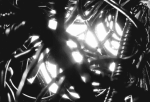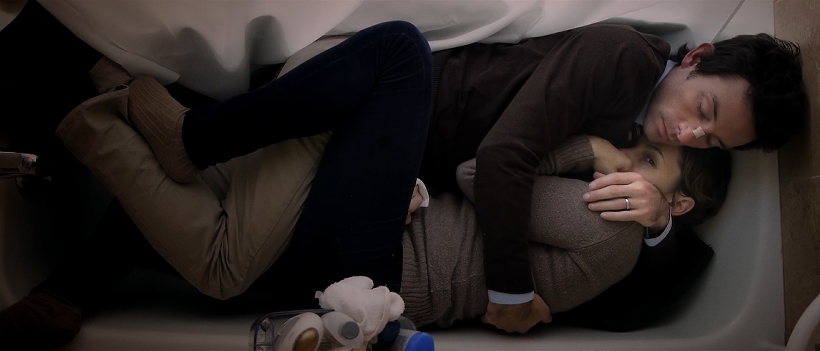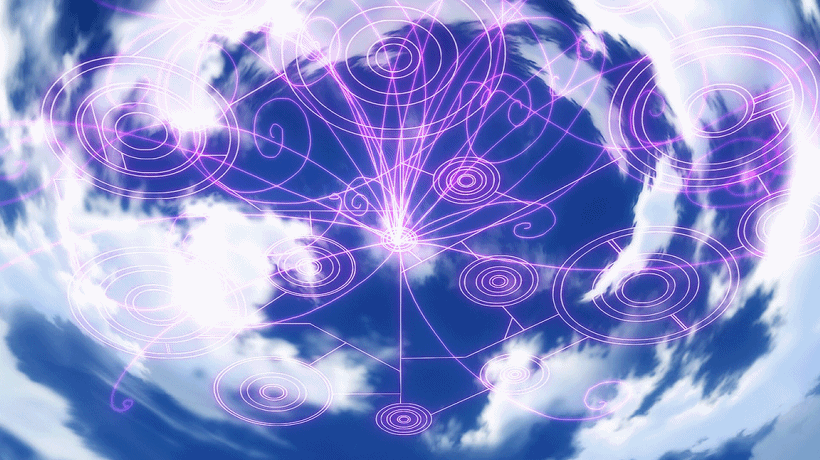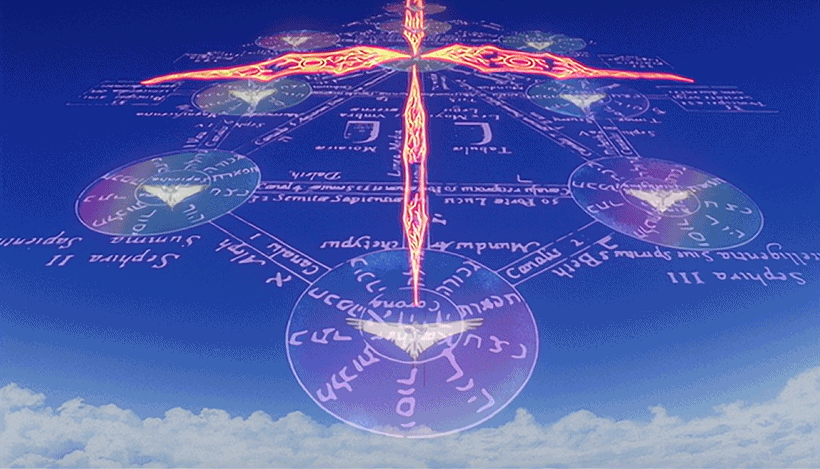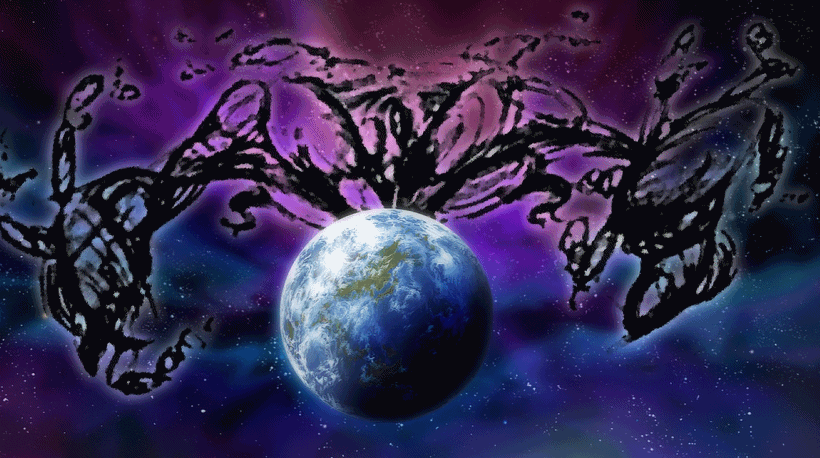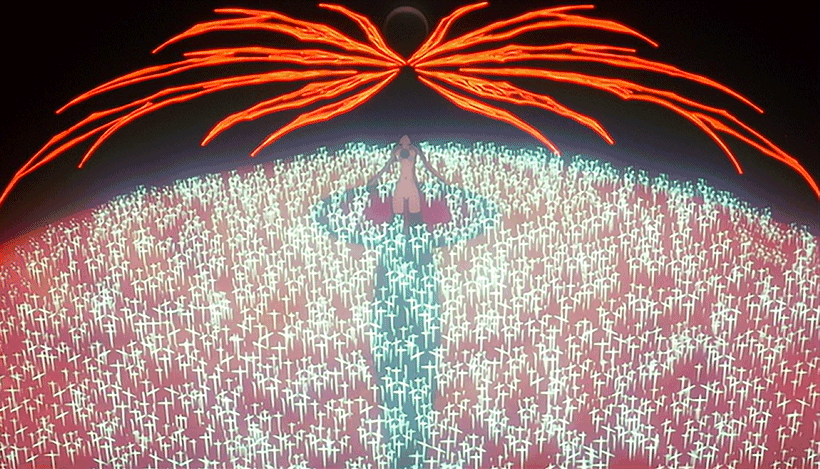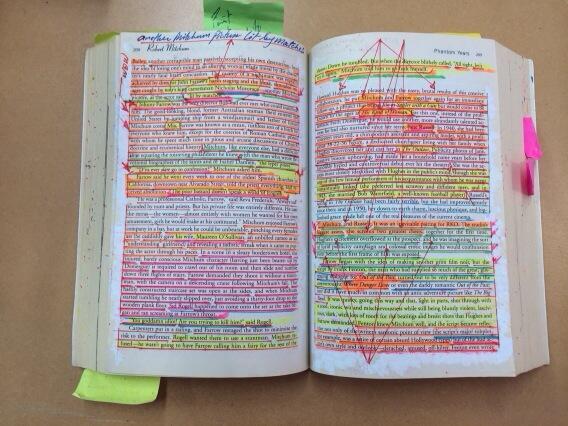Oh well, please bear with me. I don’t want to offend anyone, but see the category, this goes into “mythology”.
A big part of what I seem to do on this blog is about recognizing some recurring patterns about the most disparate things. The world is incredibly complex but sometimes I recognize these common patterns, and in the end there seem to be a smaller number of them. Whether “true” or not, these patterns have a significant explanatory power, so by using them I often understand other aspects I otherwise would miss. So, even if dealing with a rather complicate and sensible matter, I’ll naively describe another of these patterns.
Obviously, this specific one isn’t a novel problem. In fact I bet a common reaction about the recent news has been: “Oh shit! AGAIN?!” It’s more or less like parents that come back home and find that the kids are fighting again.
One of my basic intuitions, many years ago, was that the core of the Israeli–Palestinian conflict could have been represented by another type of conflict that is just far more widespread and common: mind/body dichotomy.
The pattern I’m describing here is that, rather often, large social structure, like organizations, nations, religions and so on, often exhibit general models of behavior that exist within a single human being. It’s as if a social body is indeed a conscious body, with all the shortcoming, conflicts and problems of an individual human being. As if parroting an actual person.
So it’s as if you can “project” on this larger social body the issues that usually belong to a single person. Having a metaphoric power. But, actually, from the original perspective of Kabbalah, it is curious to notice that what I described as a metaphor, for them it’s LITERAL. Since the physical world is strictly illusion, what you see reflected outside yourself depends solely on you. Literally, the Israeli–Palestinian conflict is YOUR FAULT. Really specifically yours (or mine), as a single individual being. If people are dying it’s because of what you’ve done today. It depends on you, you monster.
See this video and notice it’s from 2006:
https://www.youtube.com/watch?v=3TxuGjuhECA
Even this video presents its own dichotomy: Israel versus Nations. Explaining (since all Kabbalah terms are strictly symbolic) that Israel = desire for unity & spirituality, and Nations = striving for mere self satisfaction.
When I came to my own intuition about mind/body I didn’t know anything at all about Kabbalah, but the pattern is rather similar. Getting closer to the point, more than mind/body, this is a conflict of the more “rational” side of the mind, and it’s “emotional” side (because usually rationality = mind, and emotion = body, we’re just switching tools and shapes using the same pattern).
Now. Take Israel. Would you put it on the emotional or on the rational side of conflict? Israel represent rationality. It’s the modern nation. It’s recognized by the western world and legitimated as so. It has the military power. It’s more culturally “developed” (not a quality on itself). Israel represent the official institution that is clearly defined and recognized. Its forms are rational, overt forms. Explicit.
Take Hamas. Terrorism in general is emotional. Religious fundamentalism is especially symbolic and non-rational. It’s an emotional push, it’s less directed. Despite terrorism is really NOT tolerable and can’t be justified, it still has a form of legitimation: when people are so hopeless and feel crushed in a corner, they leash out, with blinding rage and despair. Terrorism comes out of desperation. It is never justifiable, but it can be understood. It just has very deep motives, buried down, away from the rational light of history. It’s the irrational beasts lurking in the dark. A monster. It broods and incubates, till it bubbles up. And explodes, apparently unjustified.
Another step forward: more than simply rational/emotional, I can describe this conflict as taking the form of another rather widespread condition: a panic attack. What’s the most obvious trait of a panic attack? That it is extremely counter-productive. And irrational. You literally can’t explain WHY it happens and WHY it ruins your life now. You just want it to STOP. The panic attack is indeed the result of a deep conflict between the rational and the emotional mind. Or: identity versus rational. Identity, in this definition, is what can’t change. It just can’t. It can’t be moved at all. It’s what you are deep down, regardless of all your struggles. Rationality instead is the part of the mind that goes “social”. It’s the part that wants to be included in the world, that bends under external demands, like the desire to be successful, popular and so on. That needs to achieve and perform. This side is also the only side the external world is interested in because, to reproduce itself, it needs vessels that are uniform. Alike. Society reproduces itself when it can conquer cells and make them like itself. Transformed into something usable. Reproducible. So society forces a conformity. Otherwise, if you don’t bend and conform, you are banished, a thread, become outcast. The rational side of a person STRIVES HARD to conform itself, to become as society demands. And this obviously puts the identity side on a very strong pressure. Because identity just won’t move. What happens then when you have two things, one that won’t move, and another that pushes and pushes hard? That this thing breaks apart. It literally comes to pieces. And it can take a lifetime, if you’re lucky, to bring those pieces back together. Hence all kinds of problems, from drugs to psychological meltdowns and everything else. People break because they are pulled apart in two different directions.
Back to the panic attack. A panic attack happens when the rational mind has pushed (and violated) the needs of the emotional mind so deep down that at some point the emotional mind just EXPLODES. A panic attack is literally the emotional mind sabotaging the activities (and needs) of the rational mind. It’s a bomb. It destroys what you want to do. It stops you. Obviously, it’s extremely counter productive. It arrives at the worst possible moment, as if your body HATES you with a passion. And you, because conscience is the rational mind, you HATE your body with a passion. Because your body doesn’t listen to you, doesn’t respond the way you want and keeps sabotaging what you need to do. The body is your enemy, as if it’s a stranger, that you don’t understand and works against you.
Now, back to Hamas you can notice that all they do is EXTREMELY counter productive to their own causes. If their demands are legitimate, in many ways, THEIR ACTIONS throw all that legitimacy to shit. They do the worst possible to their own cause. If this was a tactical battle, they handle it in the worst possible ways because they just keep making their own position worse and worse. Why so stupid? Because it’s irrational. It’s the emotional side that has been crushed so hard against the corner that it is only able to leash out with rage. Just blind irrational rage you’ll never be able to justify rationally. It doesn’t make any sense, and at some point you just wish you could erase them from existence so that they just fucking stop, and be done with it. And that’s Israel’s answer. Either you stop NOW, or I fucking obliterate you.
The other aspect about Hamas, if you listen to what they say, is that what they say is extremely… childish. They won’t stop launching their toy rockets that do ABSOLUTELY NOTHING if not justify Israel ACTUAL killings because it would be like “giving up”. Kids don’t give up. Ever. And then they say they’ll UNLEASH THE APOCALYPSE. Which is extremely serious and ominous. But also so childish again. Why? It’s irrational again. They speak through symbols because they are an emotional side. They are arrogant because kids are arrogant, especially if cornered.
And then it all seems to bog down to another: who started first? If you stop then I stop too. NOPE, YOU STOP FIRST! BUT IT WAS YOU WHO STARTED! And so on, like kids.
In Infinite Jest, David Foster Wallace played explicitly with this pattern working on multiple levels. Buildings that become alive, conscious. Forms that are shaped-as, but that also become. Prosthetic bodies. The MIT thing from where Madame Psychosis plays her night drama is shaped like a brain. In “The Broom of the System” the town is shaped like a human profile, and by the end of the book it actually comes alive. Again in Infinite Jest the human double bind that is often described in various forms represent what I just described in the Israeli–Palestinian: a vicious circle. Which is the symbol that opens every chapter. “Annular”, is a keyword of the book. If in a single person the anxiety’s double bind is a vicious circle that seemingly goes on forever dispersing endless psychic and physical energy, this becomes the inspiration to create a kind of vicious circle that, based on trash (which also is a psychological projection), can produce actual energy to power the whole of United States. Forever. Annular Fusion. And “annular” is also the shape of the conscience in the mind. And annular is the structure of Infinite Jest, the book itself, looping on itself. Ending where it starts (but missing a year). It’s both parody and projection on the large of what happens instead “within”.
The same suggest the Kabbalah in that video, but literally (the spiritual self and its struggles projects the physical world and its struggles), and the same I described, more metaphorically, with the Israeli–Palestinian conflict.
Is the real annular fusion the ring of self-consciousness that leads us to feel trapped in our solipsistic cells?
Whether you believe in the hard form of projection (Kabbalah), or the weaker, merely metaphoric and symbolic one I described, I think the form of the pattern I just described can “explain” why this conflict goes on forever and seems at the same time completely ridiculous and yet so dramatic and unsolvable. Because it’s just so deep in all of us, and it’s out there, reminding us the way we are. No so different, or “better”, as we like to think. Nor stranger, or so far away, and “safe”, really.
This means that the Israeli–Palestinian conflict won’t be solved by just putting each in its own territory. That’s only fuel for the worst to surface again and again. The conflict will be solved when they’ll be able to be together (a mind can’t do without a body, go figure), realizing there’s no difference between them, and that to live in happiness they need each other. You know, brothers and sisters, and all that rhetorical banality.
